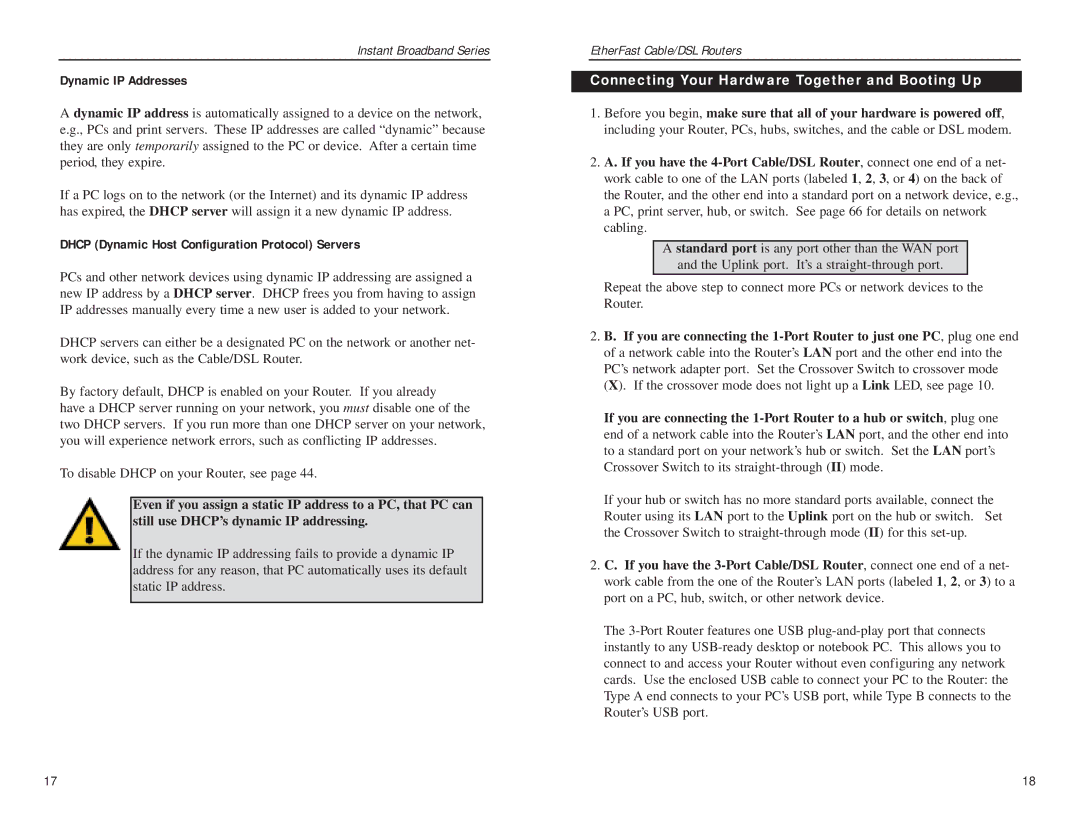
Instant Broadband Series
Dynamic IP Addresses
A dynamic IP address is automatically assigned to a device on the network, e.g., PCs and print servers. These IP addresses are called “dynamic” because they are only temporarily assigned to the PC or device. After a certain time period, they expire.
If a PC logs on to the network (or the Internet) and its dynamic IP address has expired, the DHCP server will assign it a new dynamic IP address.
DHCP (Dynamic Host Configuration Protocol) Servers
PCs and other network devices using dynamic IP addressing are assigned a new IP address by a DHCP server. DHCP frees you from having to assign IP addresses manually every time a new user is added to your network.
DHCP servers can either be a designated PC on the network or another net- work device, such as the Cable/DSL Router.
By factory default, DHCP is enabled on your Router. If you already
have a DHCP server running on your network, you must disable one of the two DHCP servers. If you run more than one DHCP server on your network, you will experience network errors, such as conflicting IP addresses.
To disable DHCP on your Router, see page 44.
Even if you assign a static IP address to a PC, that PC can still use DHCP’s dynamic IP addressing.
If the dynamic IP addressing fails to provide a dynamic IP address for any reason, that PC automatically uses its default static IP address.
ing Your Hardware Toging Up
EtherFast Cable/DSL Routers
Connecting Your Hardware Together and Booting Up
1.Before you begin, make sure that all of your hardware is powered off, including your Router, PCs, hubs, switches, and the cable or DSL modem.
2.A. If you have the
A standard port is any port other than the WAN port
and the Uplink port. It’s a
Repeat the above step to connect more PCs or network devices to the Router.
2.B. If you are connecting the
If you are connecting the
If your hub or switch has no more standard ports available, connect the Router using its LAN port to the Uplink port on the hub or switch. Set the Crossover Switch to
2.C. If you have the
The
17 | 18 |
